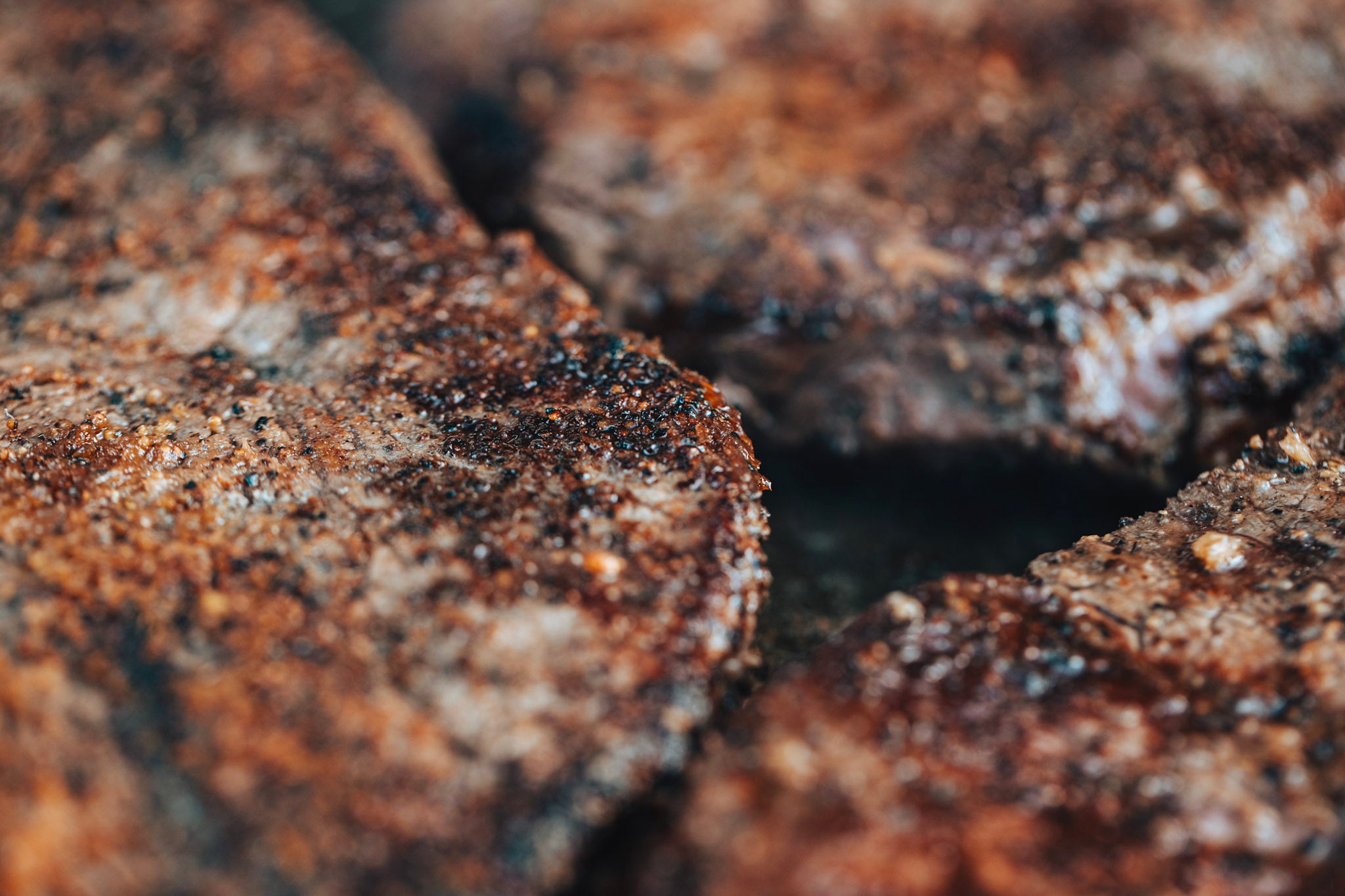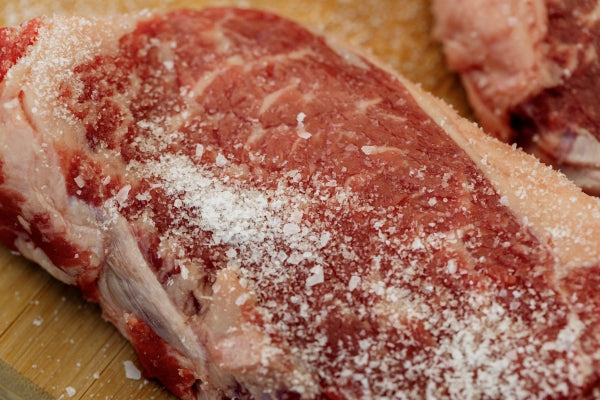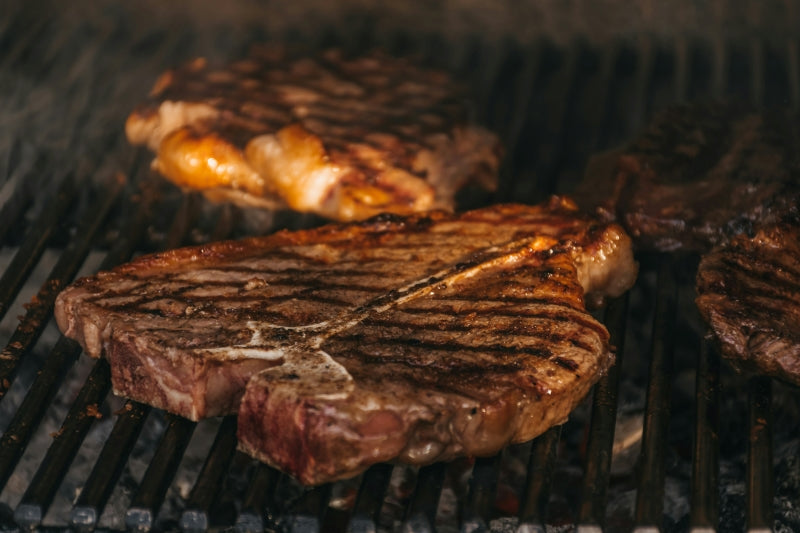
The Anatomy of Flavor: Understanding Taste Components in Quality Beef
When you think of quality beef cuts, you might picture a Ribeye searing in cast iron or hamburgers sizzling on a grill. You might even imagine the beef’s savory aroma. Regardless of what comes to mind, you know quality beef when it hits your tongue.
Beef offers more than one flavor. Its taste ranges in depth and richness, catering to a multitude of flavor palettes. The nuances are determined by factors such as marbling, aging, cattle diet, and more. Let’s explore the taste components of quality beef so you can select the most flavorful cuts for your plate.
What makes the flavor of beef from Lazy T Ranch unique?
Here at Lazy T Ranch, we prioritize beef quality. Everything we do contributes to producing melt-in-your-mouth, out-of-this-world cuts. After all, what’s better than a delicious steak?
Our cattle spend most of their lives on our sprawling grasslands, drinking fresh water from artesian springs and grazing on natural feed. We ensure they live as stress-free as possible. (Our cowboys work them on horseback, never on ATVs.)
Come fall, after our yearlings spend the summer in the Bighorn Mountains, they’re taken to a feedlot where they eat a closely monitored diet (20% silage, 65% corn, 15% distillery grains). The feed allows the cattle to reach the desired weight, and it adds a sweeter taste to the beef.
Once the cattle are finished (termed as “fats”), they’re expertly processed and dry-aged for 21 days. Dry-aging beef is like storing wine in a cellar. The beef is kept inside a refrigerated chamber with controlled airflow. Over time, enzymes break down the beef’s muscle fibers, creating unmatched tenderness and enhancing the beef’s flavor.
We believe our cattle’s lifestyle paired with the dry-aging process yields quality beef with a unique, mouthwatering flavor. We often joke that once you taste our beef, you’ll become a beef snob. (We’re spoiled rotten when it comes to good beef.)
How does beef marbling affect taste?
The term marbling refers to the visible white streaks of intramuscular fat webbed throughout the beef’s muscle tissue. During the cooking process, the intramuscular fat liquefies and self-marinates the meat, giving it a velvety texture and rich, buttery taste.
A well-marbled steak offers incomparable flavor and juiciness, which is why marbled cuts of beef are highly sought after. To achieve the desired marbling, one cannot simply “fatten up” cattle. Breeding and genetics play a huge role in marbling, but so does the type of feed and speed at which cattle are finished.
If cattle gain weight too quickly, they develop a surplus of intermuscular fat—solid chunks or strips of fat between muscles. Intermuscular fat is rubbery and often unpleasant to eat, so it’s usually trimmed off. Intramuscular fat, on the other hand, forms within the muscle tissue and resembles marbled stone. The unsaturated (healthy) fat softens the meat and makes it easier to chew, which in turn releases more flavor.
Beef quality and marbling go hand in hand. The higher the intramuscular fat content, the greater the beef’s flavor and juiciness. We take our time finishing cattle to ensure they produce well-marbled cuts.
What is the influence of feed on the flavor of beef?
Although cattle’s general nutrition and lifestyle affect beef quality, the majority of beef’s flavor comes from finishing feed—what the cattle eat during the months before slaughter. Cattle are either grain-finished or grass-finished. A finishing diet of silage, corn, and distillery grains gives the beef a sweet, buttery flavor while a finishing diet of grass yields beef with a mild taste.
Remember: fat determines flavor. So, if a breed (such as Wagyu) is genetically prone to marbling, it can reach the desired marbling score on a grass diet. However, its flavor will vary from that of grain-finished beef.
The conversation about feed and flavor boils down to preference. We like our beef rich and robust, with a sweet aftertaste.
How does the dry-aging process enhance the flavor of beef?
Dry-aging beef improves the meat’s tenderness and flavor. As the beef sits in a refrigerated chamber, enzymes break down muscle fibers and fats, giving the beef a savory taste and making it easier to chew. Also, dry-aging removes moisture, thus concentrating the beef’s taste and making the fat within the meat more pronounced.
How do cooking methods impact the flavor components of beef?
Beef’s flavor varies between cuts due to fat content and location. For example, since an Inside Skirt comes from well-exercised muscle, it’s generally beefier in taste than a Filet Mignon. And a Ribeye is fattier and tenderer than a lean Ranch Steak. That said, it’s important to consider the cut of beef when selecting a cooking method.
A tough cut requires longer cooking time over low heat. This breaks down the muscle fibers, making the beef easier to eat and thus enhancing its flavor. A tender cut tastes best when cooked over high heat for a short amount of time. The high heat creates a crust, which locks in juices and flavor, and the short time ensures the cut remains tender.
What can consumers look for to assess the flavor quality of beef?
- Look for marbling! Nicely distributed intramuscular fat guarantees juiciness and flavor.
- Learn whether the beef was grain-finished or grass-finished. This will help you gauge the beef’s flavor profile.
- Pay attention to sourcing. Beef raised on open pastureland will generally be of higher quality than that raised in commercial lots.
How does Lazy T Ranch ensure the flavor quality of its beef?
Simple. We don’t cut corners. Our cattle’s health and the quality of our beef are our number one priority. We genetically select the best cattle, give them natural feed and low-stress lives, and finish them on a diet guaranteed to produce delicious marbling. Then, we dry-aged our beef for 21 days to enhance the already incredible flavor, expertly cut the beef, and vacuum package it for peak freshness.
Bring a taste of Lazy T Ranch to your table—shop our beef box offerings.


